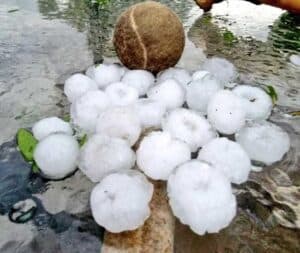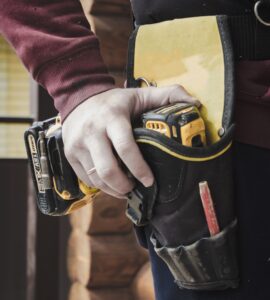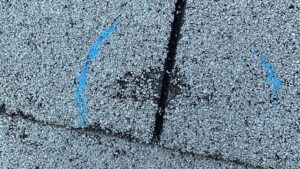Numerous components make up the roof of a structure, and each one has an important, even essential, component to the protection it offers. The drip edge is one of those components. It is vital for the health of the roof and the home in general. In fact, a good drip edge can keep water from draining down the side of your house even if the gutters are not functioning properly.
What Is a Drip Edge?
The drip edge on a roof is the metal flashing that is positioned at the edges of the roof. This flashing helps encourage the flow of water away from the home and controls its movement away from the fascia. By doing this, the drip edge works to protect the roofing components nearby.
If looking at the roof edge, the drip edge is the portion that extends the sides of the roof. It typically has a metal flange on it that is bent in the opposite direction from the fascia on the structure. The roof drip edge isn’t super noticeable until you look for it. Then, you will see that it provides structural stability to the roof itself while still maintaining the cohesive look of the rest of the roofing structure.
What Is the Function of the Drip Edge?
These metal sheets in the shape of an “L” are installed along the edge of the roof. Sometimes referred to as the roof flashing, they work to direct water as the rain hits, or the snow on the roof melts away from the fascia so that the water enters the gutter.
One way to see what they do is to consider what happens if the drip edge isn’t present. When this happens, water will likely end up seeping into the edges located just under the shingles. This can saturate the wood and creates an unsafe condition, and over time, can lead to damage to the various structural components of the home.
Not all homes have a drip edge, but they should. They have been proven to be so valuable that most building codes now require them throughout the country. They are essential to protecting your home from damage.
There are two primary goals of the drip edge:
- Encourage water to flow away from the fascia: The drip edge works to take advantage of surface tension and other forces, including gravity, to help encourage water to move into the gutter after falling on the roof. When the gutter is clogged or not there, the drip edge encourages the water to splash out away from the home instead of allowing it to run down the siding.
- Minimizes damage from wind-driven rain: A second benefit to the drip edge is that it can help to encourage the movement of rain in serious wind conditions. It helps to control water that’s being pushed around on the roof by strong winds. This helps to protect the roof deck from damage that this water can otherwise cause.
What Is the Drip Edge Made From?
You will find there are various types of drip edge materials available. Some building codes have specific requirements you must meet. Typically any corrosion-resistant material is ideal. There are three main types commonly used:
- Galvanized steel: This option tends to be a durable solution. Galvanized steel will not corrode even with constant water on it. However, a quality product is needed, which generally means it should be at least 24-gauge steel to handle strong wind conditions.
- Aluminum: Known for its lower cost, aluminum is fairly common for drip edges. It is not as strong, but it does not corrode and can be colored to match the rest of the home’s features.
- Copper: Lesser common, copper is a durable material that’s often used to create a more aesthetically pleasing look. Most often, it should be thick enough to handle high winds.
Some other options may exist as well, including vinyl, fiberglass, and plastic versions. The key here is to choose a material that works for your home and is as durable as possible.
Why You Need a Drip Edge in Place
You may have learned that to be up to code, your home needs a drip edge installed. This is an investment that offers significant positive returns and should not be ignored. Here’s a look at some of the benefits of having a roof drip edge in place.
- Prevents rotting fascia: By moving water away from the wood fascia, drip edges help to prevent this wood from rotting out, which can add to the cost of roof maintenance and upkeep.
- Protects roof decking: It also works to protect the roof decking edge, which is particularly vulnerable to rotting as well as animals getting into it. This is the edge that’s between the fascia and the decking.
- Minimizes the risk of ice dams: In the winter months, the drip edge works to protect the bottom area of the roof. If ice dams build up in this region, that means the roof remains protected where the drip edge is in place.
- Keeps water moving away from the home: The roof drip edge works very well to move water into the gutters and away from the home. Even if you don’t clean the gutters well enough, the drip edge still helps to keep water away from the home.
- Secures the roof boards: The drip edge also works very well to prevent the deck boards and the fascia from moving, providing more overall stability to the region.
- It can protect your roof to extend its lifetime: For many homes, it works very well to help extend the life of the roof itself, providing the necessary protection for the structural components.
If you are having a new roof installed or looking for ways to protect the edge of your roof line, a drip edge is likely a must have. It is an exceptional tool that is nearly always installed on new roofing because of the functionality and benefit that it can offer.





